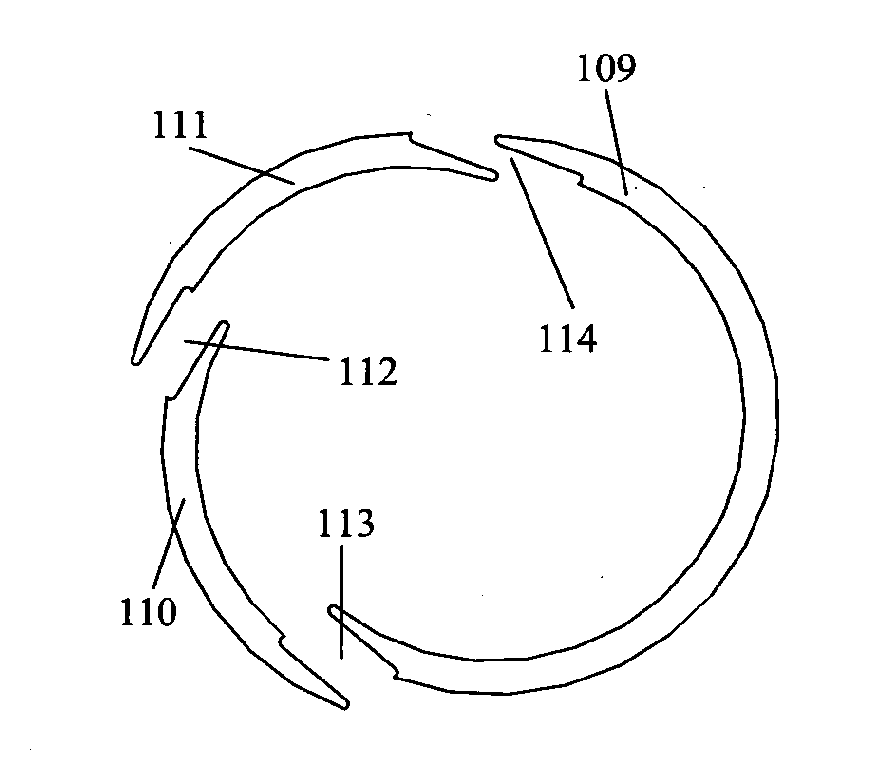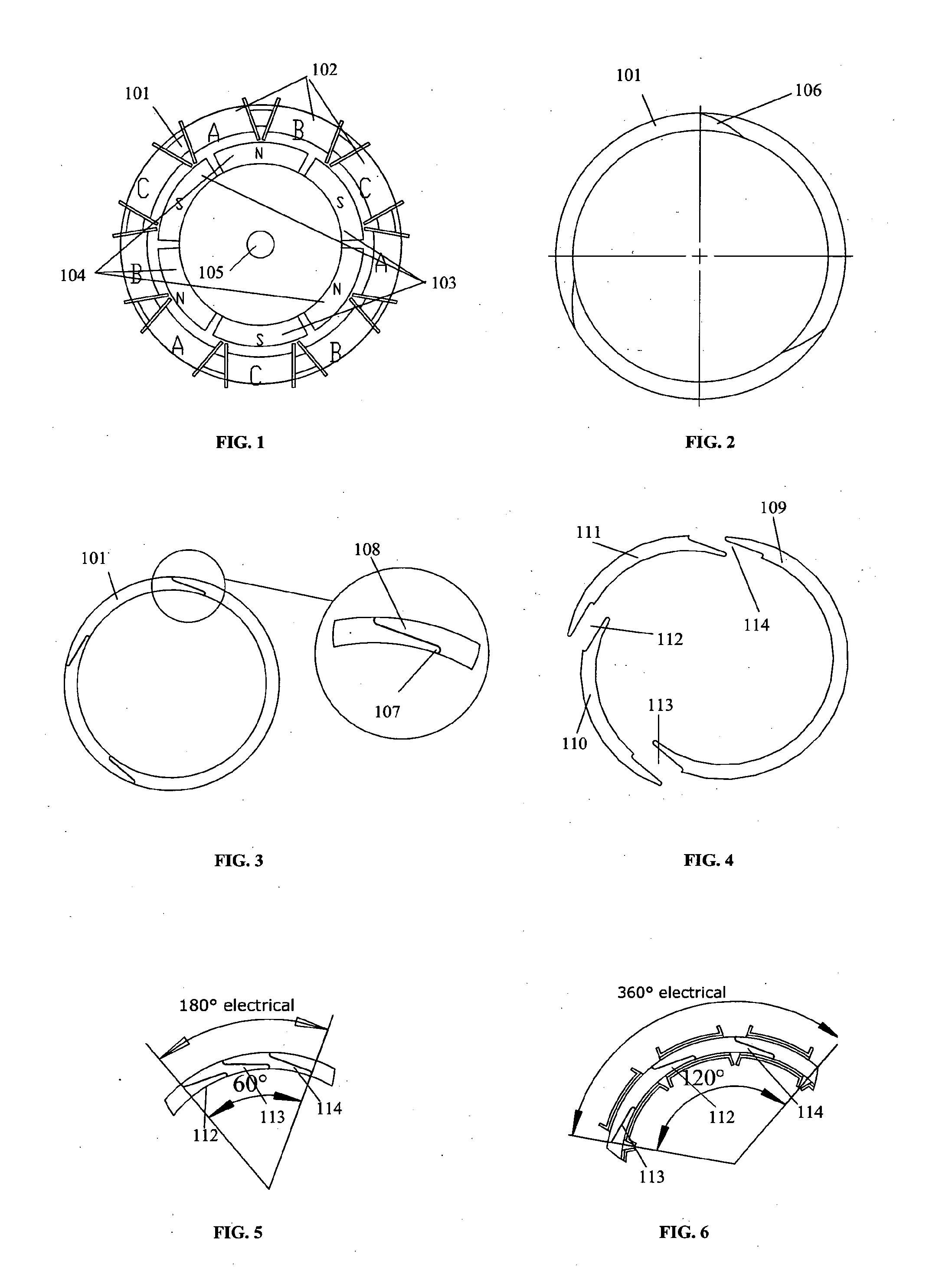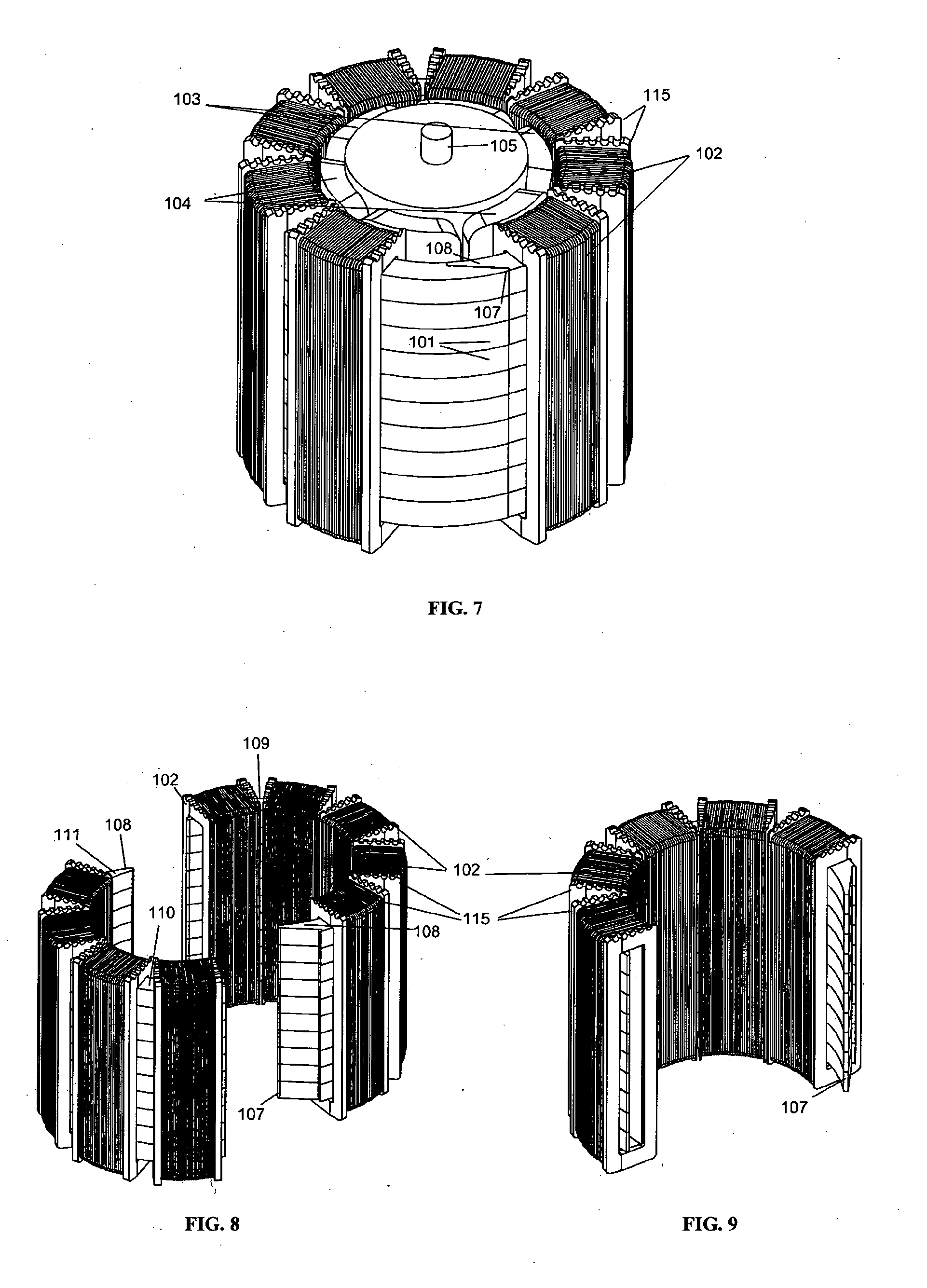Electrical machine stator assembly
a technology for stators and electric machines, applied in the direction of dynamo-electric machines, electrical apparatus, magnetic circuits, etc., can solve the problems of reducing efficiency, noise, and difficulty in placing windings on the ferromagnetic cor
- Summary
- Abstract
- Description
- Claims
- Application Information
AI Technical Summary
Benefits of technology
Problems solved by technology
Method used
Image
Examples
Embodiment Construction
[0045]Referring now to FIG. 1 this shows a plan view of a six pole motor with three phases. The poles are formed by pairs of south outwards magnets 103 and north outwards magnets 104. The phases are provided by three sets of the three phases 102 on toroidal bobbins A, B and C on a ferromagnetic or ferrimagnetic stator core 101, so that there is a set of three phases for each consecutive set of two magnets. Each bobbin of a phase will subtend two-thirds of the width of a pole magnet and 360 electrical degrees will subtend the three bobbins of a phase set, or 120 mechanical degrees. The magnets may be ferritic ceramic, rare earth or iron based.
[0046]To allow assembly of the core with the bobbins already in place the core 101 may be assembled in segments as described in the known prior art. Such segments typically are joined by simply abutting the radial faces of the segments, or using axially assembled dovetail joints. In either case this leaves at least two radial air gaps in the cor...
PUM
| Property | Measurement | Unit |
|---|---|---|
| circumferential lengths | aaaaa | aaaaa |
| electrical degrees | aaaaa | aaaaa |
| length | aaaaa | aaaaa |
Abstract
Description
Claims
Application Information
 Login to View More
Login to View More - R&D
- Intellectual Property
- Life Sciences
- Materials
- Tech Scout
- Unparalleled Data Quality
- Higher Quality Content
- 60% Fewer Hallucinations
Browse by: Latest US Patents, China's latest patents, Technical Efficacy Thesaurus, Application Domain, Technology Topic, Popular Technical Reports.
© 2025 PatSnap. All rights reserved.Legal|Privacy policy|Modern Slavery Act Transparency Statement|Sitemap|About US| Contact US: help@patsnap.com



